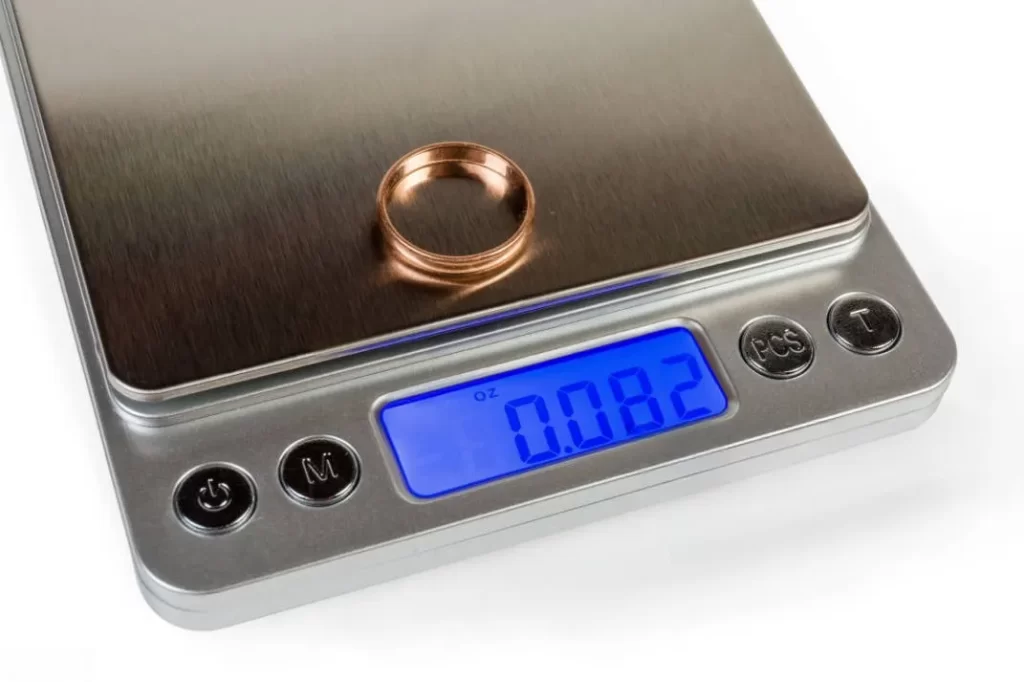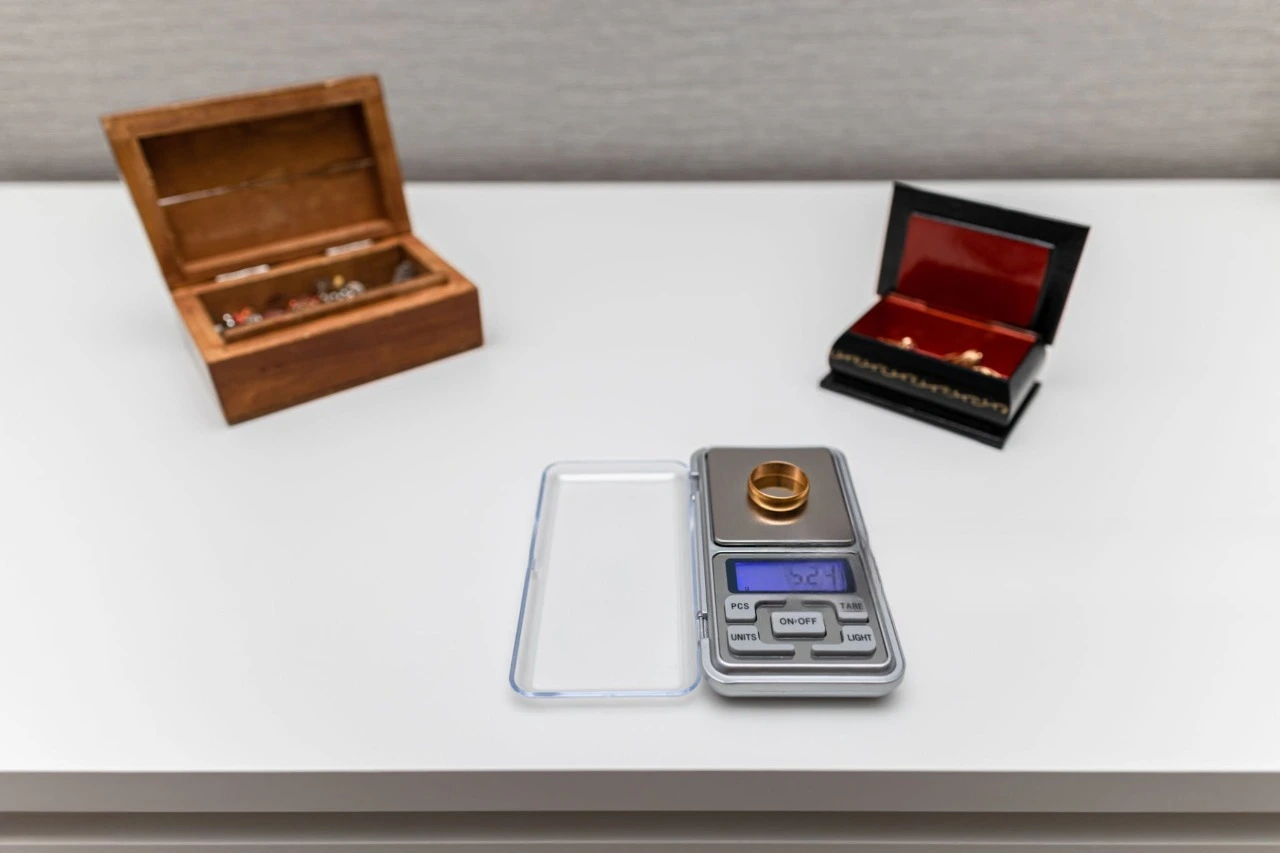For anyone working with precious metals, gemstones, or intricate jewelry, scale accuracy isn’t just a technical detail—it’s the backbone of business integrity and financial precision. Whether valuing a diamond or measuring gold for an alloy, a reliable jewelry scale is essential. But just how accurate can these instruments be, and what factors influence their performance?

Why Accuracy Matters in Jewelry
Precision in the jewelry industry is non-negotiable. Even a tiny measurement error can lead to significant financial losses or strained client relationships.
Pricing and Material Value
The value of gold, silver, platinum, or gemstones hinges on weight. Gold, for example, is traded by the troy ounce, where a fraction of a gram can mean hundreds of dollars in profit or loss. For jewelers or individuals appraising assets, an inaccurate scale risks miscalculations that erode margins or undervalue treasures.
Craftsmanship and Production
In jewelry making, precise measurements ensure alloys maintain consistent properties and materials like solder or flux are dosed correctly. A small error can weaken a piece, alter its appearance, or ruin its quality, leading to costly rework or unhappy customers.
Customer Trust and Transparency
Trust is everything in high-value transactions. Using a verified, accurate scale reassures customers of fairness and transparency. On the flip side, doubts about scale accuracy can erode confidence, damage reputations, and drive business away.
What Does Scale Accuracy Mean?
To gauge a jewelry scale’s accuracy, you need to understand three key concepts.
Readability (Resolution)
Readability is the smallest increment a scale can display. For instance, a scale with 0.01g readability shows measurements to one-hundredth of a gram. In jewelry, high readability—like 0.001g or even 0.0001g—is vital for weighing tiny, valuable items like diamonds or gold fragments.
Precision (Repeatability)
Precision measures a scale’s ability to deliver consistent results when weighing the same item multiple times. Consistent readings signal a stable scale, while varying results suggest issues with internal mechanisms or external factors.
Calibration
Calibration aligns a scale with known standards, much like setting a clock to the correct time. Over time, wear, temperature shifts, or even moving the scale can throw it off. Regular calibration with certified weights keeps measurements accurate.
Types of Jewelry Scales and Their Accuracy
Accuracy varies by scale type, each suited to different needs in the jewelry trade.
Pocket Scales (Portable Scales)
- Typical Readability: 0.01g to 0.1g
- Accuracy Level: These compact scales are convenient for quick checks but less precise due to their simpler design. They’re best for rough estimates or on-the-go weighing, not definitive valuations.
Bench Scales (Tabletop Scales)
- Typical Readability: 0.001g to 0.01g
- Accuracy Level: A step above pocket scales, bench scales offer better precision and stability. They’re ideal for jewelry stores weighing scrap gold, gemstones, or managing inventory. Many include draft shields to block environmental interference.
Digital Analytical Balances
- Typical Readability: 0.0001g (0.1mg) to 0.001g (1mg)
- Accuracy Level: These are the gold standard for precision in jewelry. Designed for tiny, high-value items like loose diamonds or fine gold dust, analytical balances feature enclosed chambers and advanced calibration systems. They’re sensitive to even minor environmental changes.
Factors That Affect Accuracy
Even top-tier scales can falter if external factors aren’t managed.
Environment
- Temperature and Humidity: Changes in temperature can affect a scale’s electronics or mechanical parts, causing readings to drift. High humidity may also disrupt sensitive components.
- Vibrations: Subtle vibrations from foot traffic or nearby equipment can throw off high-readability scales.
- Air Currents (Drafts): For scales with 0.001g readability or better, a slight breeze can skew results, which is why analytical balances often have draft shields.
- Magnetic Fields: Strong magnetic fields can interfere with electromagnetic force restoration (EMFR) technology in precision scales.
Calibration Status
An uncalibrated scale, no matter how advanced, will give unreliable readings. Regular calibration is essential to maintain accuracy.
Usage Habits and Technique
- Level Surface: A scale needs a flat, stable surface. Even a slight tilt can skew results.
- Cleanliness: Dust or debris on the weighing pan can add weight or hinder performance.
- Centering the Load: Placing items in the pan’s center ensures even weight distribution for accurate readings.
- Proper Handling: Dropping or mishandling a scale can damage its sensors, affecting accuracy permanently.
How to Test and Maintain Scale Accuracy
Keeping a jewelry scale accurate requires routine checks and occasional professional care.
DIY Methods for Daily Checks
- Certified Calibration Weights: Use OIML or NIST-certified weights, made to precise tolerances, to verify accuracy. Place a known weight (e.g., 10g or 50g) on the scale and compare the reading. A mismatch signals a need for calibration.
- Repeatability Test: Weigh an item, like a ring, 5–10 times, removing and replacing it each time. Consistent readings confirm good precision.
- Corner Test: For larger scales, place a known weight in the center, then each corner of the pan. Consistent readings indicate a well-functioning scale; discrepancies suggest it needs service.
Professional Calibration and Servicing
Daily checks are helpful, but professional calibration by a certified technician, ideally annually or semi-annually, ensures your scale meets industry standards. It also catches potential issues early and provides documentation for audits or legal purposes. Call a professional if DIY tests show consistent errors, the scale has been moved or dropped, or environmental conditions have changed significantly.
Conclusion
In the world of precious metals and gemstones, a jewelry scale’s accuracy is critical. It ensures fair pricing, supports precise craftsmanship, and builds customer trust. When choosing a scale, consider your needs:
- A pocket scale works for quick estimates.
- A bench scale balances accuracy and practicality for daily retail use.
- An analytical balance is essential for high-value, tiny items or lab-level precision.
A scale’s accuracy depends on its environment, calibration, and handling. Invest in a quality scale, maintain it carefully, and schedule regular professional calibration to ensure your measurements are precise, trustworthy, and reflective of true value.




